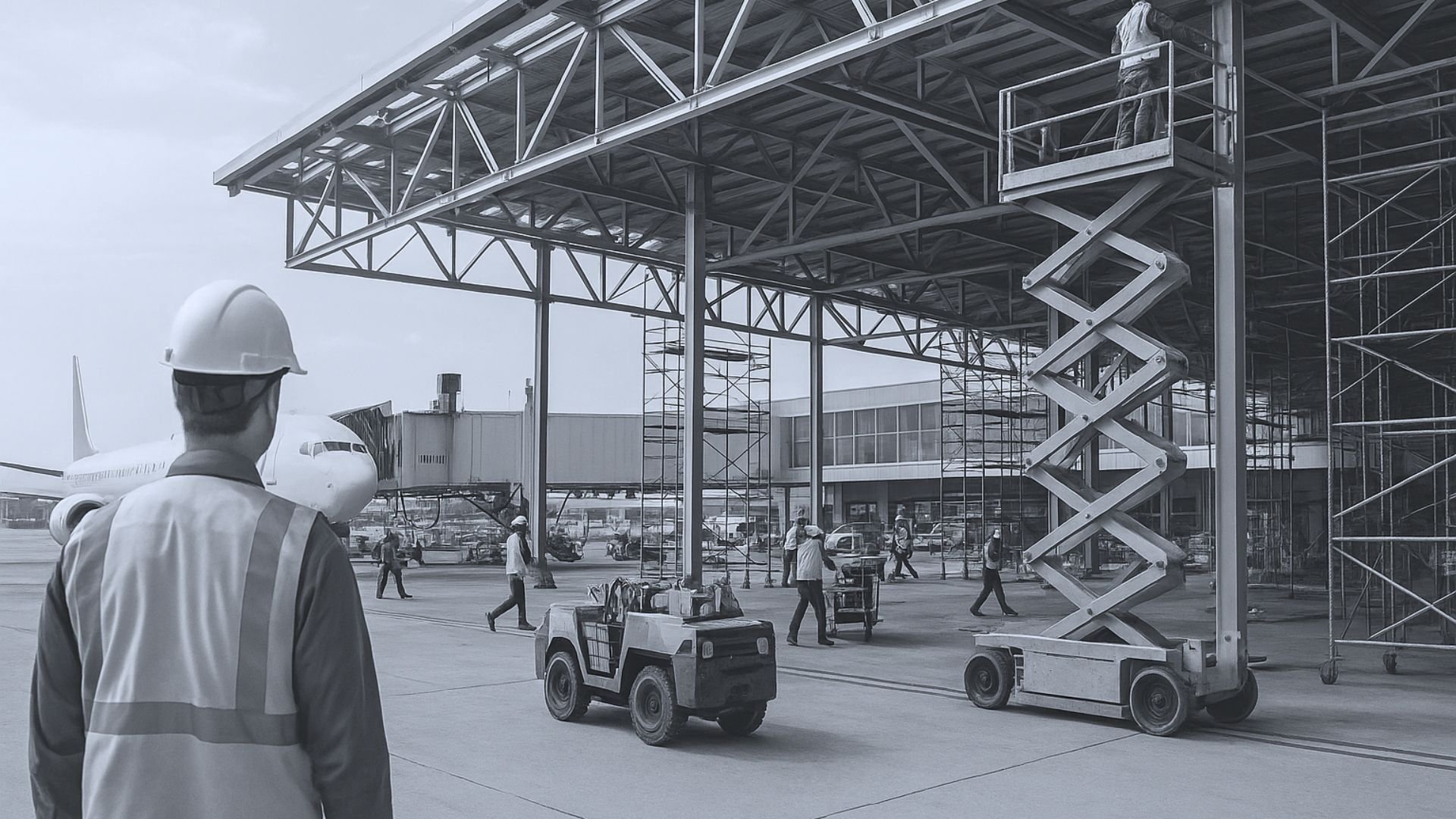Zero queues sound perfect—but relentlessly chasing them is expensive, inefficient, and can even hurt the overall airport experience. Smart airports plan for the right queue, not no queue.
A consultant’s take on airport wait times
By Esben Kolind, Lead Consultant at Copenhagen Optimization
Why write about queues at all?
At dinner parties I’m often asked: “Why is there always a long queue on Monday mornings? Surely the airport knows and can plan better?”
The short answer: Yes, the airport knows—that’s why there is a queue.
Counter-intuitive? Let me explain.
The uncomfortable truth: “no queue” is not a strategy
Passengers love the idea of walking straight through every checkpoint. I do too. But for airports and airlines, staffing to avoid any queue at all times is a costly luxury:
- Idle capacity is expensive. If demand dips, your open lanes and officers sit underutilized. Those costs don’t vanish—they show up in airport charges and ultimately in ticket prices.
- Queues are a planning tool. A well-managed queue is a buffer that absorbs natural variability in passenger arrivals and processing rates.
- Self-service won’t eliminate all queues. Even with more automation, we’ll still need staffed checkpoints for the foreseeable future.
The bottom line: A queue, within an agreed service level, is efficient. Zero queue, always and everywhere, usually isn’t.
What actually creates a queue?
It’s simple—and brutal:
- When more passengers arrive than you can process, a queue builds.
- When you process faster than passengers arrive, the queue shrinks.
Sounds easy—so why not just “predict and staff accordingly”? Because variation is real:
- Total daily passengers a few weeks out? Reasonably predictable.
- But… per-flight loads, local vs. transfer splits, bag/no-bag behavior, which checkpoint passengers choose, and the day-of disruption cocktail (weather, traffic, late buses, group arrivals)—that’s hard.
- Processing rates aren’t constant either. Human factors, lane mix, compliance, and equipment all move the needle.
Queues exist to absorb these micro-shocks. If you promise “<5 minutes for everyone” under high variation, you’ll need a massive staffing buffer most days. That’s rarely economical.
Service Level Agreements are there for a reason
Most airports work with SLAs like “maximum 10 minutes for 90% of passengers” over a day or a week. The target recognizes that:
- Forecasts are distributions, not certainties.
- Plan for the rush, not a perfectly flat day. Capacity should cover known peak windows; trying to erase all spikes everywhere is wasteful and unrealistic.
- A small, controlled queue in peak is rational and fair.
Think of SLAs as a contract with variability: they set expectations everyone can live with—passengers, staff, and airlines alike. It’s the same reason you don’t build a cathedral just to fit the Christmas crowd: you design for most days, add smart ways to handle the surge, and accept that a short wait during the big moments is normal.
👉 Learn how London Luton Airport managed to reduce security wait times by 25% and increase passenger satisfaction by 80%
The counter-intuitive bit: start the peak with no queue
Here’s a small operational truth: Just before a peak, you want almost no queue.
This often makes your staff wonder “Why are we staffing this many lanes when there is hardly any queue?”
If your maximum throughput matches the peak inflow, the queue you have at the start of the peak is the queue you’ll carry through the peak. Start with 100 in line, you’ll hover around 100. Start with 20, you’ll carry 20. Same staffing. Same passengers processed. Very different experience.
That’s also why “panic-opening” a lane for 60–90 minutes is often a bad trade. Depending on labor rules, opening one lane for a short burst can mean 5–6 extra officers for 6–8 hours. You pay a full-shift price for a 90-minute benefit.
👉 Learn how Stockholm Arlanda airport worked with queue management to reduce the number of passengers waiting in flow areas by more than 35%.
Tools that make “good queues” possible
To operate with confidence (and fewer surprises), you need a stack that knows when the peak is coming, respects variability, and optimizes to your SLA.
Forecasts go beyond totals. We model pax volumes, show-ups, splits (local/transfer, bag/no-bag), and checkpoint choices to shape a realistic demand picture throughout the day.
We translate expected inflows and throughput assumptions into optimal staffing plans aligned with defined service levels—and update when reality changes.
Together, forecasting and staffing give you the right capacity at the right time, which is not the same as “no queuing at any time.”
👉 Our Better Airport software suite is the future of airport management software - click here to learn more.
Don’t just meet demand—shape it
Even better than reacting to peaks? Smoothing them. That’s where Virtual Queuing comes in.
Instead of airports guessing when passengers will show up, let passengers book their own time slot to pass security. You then nudge them toward slots that align with staffing—especially before the natural peak. The result:
- Peak shaving (flatter demand profile)
- Higher predictability (booked arrivals beat guesswork)
- Happier passengers (certainty replaces anxiety)
👉 Curious what this looks like in practice? Explore Better Virtual Queuing (we’re happy to share live examples and outcomes).
Practical takeaways (to argue with me about over coffee)
- Aim for “right queue,” not “no queue.” Define SLAs, communicate them, and operate to them.
- Start peaks low. Enter the rush with minimal queue so you don’t “lock in” poor experience.
- Be realistic about short bursts. Opening lanes for an hour can have full-shift cost implications.
- Invest in variability-aware planning. Forecasts and staffing must reflect that rates and show-ups move.
- Shape demand. Virtual queuing aligns passenger choices with your operational sweet spot.
Bring your Monday mornings. We’ll make them boring.




